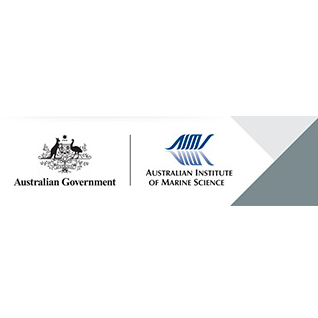Full description
This three-year project (1995-1998) assessed short term effects of commonly transported oils and in situ bioremediation on tropical Australian mangrove and salt marsh habitats. Bioremediation strategies were developed from laboratory, mesocosm and preliminary field studies. Laboratory and mesocosm experiments were carried out at the Australian Institute of Marine Science, Cape Ferguson. Field studies were carried out at Fisherman's Landing, Port Curtis, near Gladstone, within mangrove and salt marsh areas approved for reclamation by the Gladstone Port Authority.A series of flask experiments were conducted in the laboratory to test for the presence of hydrocarbon degrading micro-organisms in representative wetland habitats. Also tested was the biodegradation of selected oils (Gippsland crude, Arabian Light crude and Bunker C fuel), that are transported along the Australian coast. Potential inhibition of biodegradation by natural organics in the mangrove pore waters was investigated and the ability of an oxygen release compound (ORC) to stimulate biodegradative processes was evaluated.Aeration experiments were conducted to determine whether forced aeration and/or magnesium peroxide (an oxygen release compound) might provide significant increases in molecular oxygen saturation in the surface aerobic layer of sediments collected from under the common tropical mangrove trees, Rhizophora stylosa. Anaerobic sediments collected from a mangrove forest were oxygenated in mesocosms using forced aeration and magnesium peroxide oxygen concentrations were measured. In field experiments, the bioremediation strategy in mangroves involved forced aeration and the addition of nutrients, while in salt marsh habitats only nutrients were added. Two types of oil were used, Gippsland Light crude oil and Bunker C fuel oil.The relative rates of weathering and biodegradation of oil in experimental plots was measured and the influence of the bioremediation strategies tested. Chemical analysis of sediment cores was used to determine whether bioremediation affected the rate of penetration, dissipation or long term retention of the medium range crude oils. Sediments were collected at day 2 (40 hours), then approximately at 1, 2, 6 and 12 months post spill for mangroves, and day 2, then 1, 3 and 9 months post spill for salt marshes. Samples were analysed for total hydrocarbons and for individual alkane markers.The effects of the bioremediation strategy on oiled mangrove and salt marsh vegetation and fauna was also monitored. Leaf loss from mangrove canopies, herbivory rates and mortality of plants within the plots were recorded. Dead macro fauna were collected from the sediment surface after oiling, to determine species diversity, density and biomass. The effects of the bioremediation strategy, in mangrove plots treated with Gippsland crude oil, on the indigenous populations of heterotrophic and hydrocarbon-degrading bacteria was investigated. Micro-organisms were isolated from the plots and described morphologically.The overall project objective was to develop an information base, draft policies and guidelines on the use of bioremediation in tropical Australian foreshore environments so that bioremediation can be incorporated into overall planning and response process for oil spills in tropical Australia. To achieve this objective five tasks were undertaken, which had the following objectives: 1. to determine the effectiveness of bioremediation across mangrove and saltmarsh habitats exposed to a range of common oil types transported in tropical Australian waters2. to determine the potential negative impacts which may result from the use of bioremediation within each of the tropical foreshore habitats studied 3. to undertake a critical review of existing methods and techniques to bioremediate oily waste and opportunities for their use in tropical Australia4. to provide draft policies and guidelines on the use of bioremediation within each of the habitats studied5. to appraise the usefulness and costs of bioremediation techniques in oil spill clean-up in comparison to conventional methods
Lineage
Maintenance and Update Frequency: notPlannedNotes
CreditBurns, Kathryn A, Dr (Co Investigator)
Modified: 15 09 2025
text: westlimit=151.15; southlimit=-23.8; eastlimit=151.233333; northlimit=-23.783333
text: westlimit=147.055534; southlimit=-19.267506; eastlimit=147.055534; northlimit=-19.267506
Australian mangrove oil spill reports: Research in to the Bioremediation of oil spills in tropical Australia: with particular emphasis on oiled mangrove and salt marsh habitats. Fate and effects of oil and dispersed oil on mangrove ecosystems in Australia: Duke NC, Burns KA and Swannell RPJ (2002) Australian mangrove oil spill reports: Research in to the Bioremediation of oil spills in tropical Australia: with particular emphasis on oiled mangrove and salt marsh habitats. Fate and effects of oil and dispersed oil on mangrove ecosystems in Australia. Australian Maritime Safety Authority and APPEA. CD.
local : articleId=6089
Dispersant use and a bioremediation strategy as alternate means of reducing impacts of large oil spills on mangroves:The Gladstone field trials: Duke NC, Burns KA, Swannell RPJ, Dalhaus O and Rupp RJ (2000) Dispersant use and a bioremediation strategy as alternate means of reducing impacts of large oil spills on mangroves:The Gladstone field trials. Marine Pollution Bulletin 41: 403-412.
local : articleId=1605
The Gladstone Field Experiment: Weathering and degradation of hydrocarbons in oiled mangrove and salt marsh sediments, with and without the application of an experimental bioremediation protocol: Burns KA, Codi S and Duke NC (2000) The Gladstone Field Experiment: Weathering and degradation of hydrocarbons in oiled mangrove and salt marsh sediments, with and without the application of an experimental bioremediation protocol. Marine Pollution Bulletin 41: 392-402.
local : articleId=1604
Assessing the oil degradation potential of endogenous micro-organisms in tropical marine wetlands: Burns KA, Codi S, Swannell RJP and Duke NC (1999) Assessing the oil degradation potential of endogenous micro-organisms in tropical marine wetlands. Mangroves and Salt Marshes 3: 67-83.
local : articleId=1426
- global : 78366af2-aa79-416b-9e16-2036accd086b


